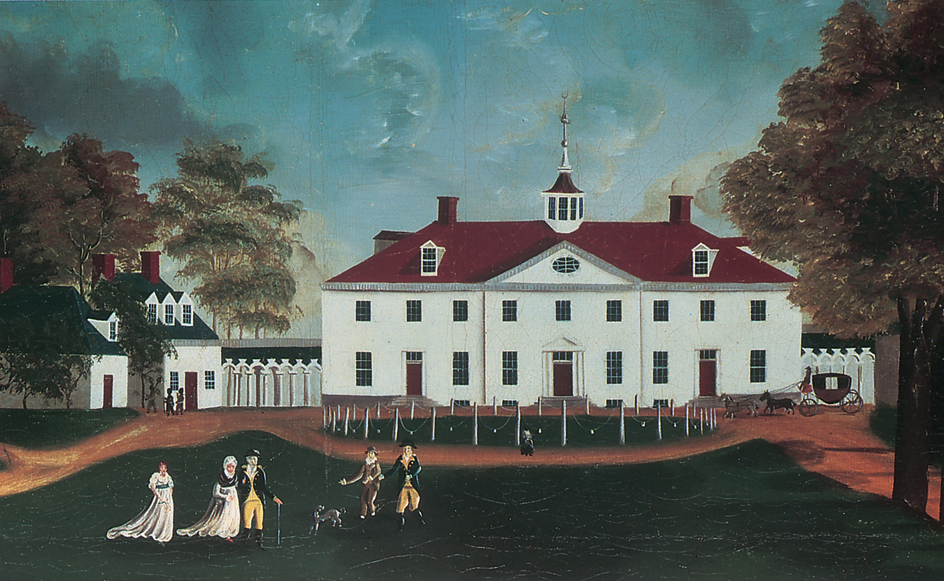Mount Vernon was the home of George Washington. It lies in Fairfax County, Virginia, about 15 miles (24 kilometers) south of Washington, D.C. The tomb of George and Martha Washington is also located at Mount Vernon. About a million tourists visit this national shrine each year. The present estate covers about 500 acres (202 hectares).

Washington lived at Mount Vernon as a farmer before he was called upon in 1775 to take command of the Continental Army in the Revolutionary War. When the war ended, he came back to Mount Vernon to retire. But his service to his country was not finished. In 1789, he was elected as the first president of the United States. At the end of his second term as president, Washington returned to the estate to live quietly until his death two years later.
The buildings.
The mansion is a large, comfortable building with white pillars. It stands on a high bluff overlooking the Potomac River. There are 20 rooms in the 21/2-story building. The attic has dormer windows. The mansion is built of wood, but the board siding on the outside is arranged to make it look like stone. The house has great dignity and beauty. Loading the player...
Washington, the first President of the United States of America
George Washington’s father, Augustine, built the main section of the house during the 1730’s. The elder Washington called the country estate the Little Hunting Creek Plantation. George Washington’s elder half brother, Lawrence, inherited the property in 1743. He renamed it Mount Vernon in honor of Admiral Edward Vernon, his former commander in the British Navy. George Washington inherited Mount Vernon in 1761. He added the piazza, a two-story porch along the river side of the house, after returning from the American Revolution.
The inside of the house has been restored as nearly as possible to its original state. Many of the original furnishings have been returned.
About 15 smaller buildings stand at the sides and behind the mansion. Some were living quarters for servants and craftworkers. Others housed farm tools and animals. Nearly everything Washington’s family needed was grown or made on the plantation, which at that time totaled about 8,000 acres (3,240 hectares).
The grounds and the tomb.
The grounds around the mansion add to the beauty of the estate. A wide, green lawn sweeps away from the east porch and ends in a park at the foot of the hill. Flower gardens and fruit and shade trees surround the buildings on the estate. Washington himself planted many of the trees that still flourish. The simple ivy-covered tomb where George and Martha Washington are buried stands at the foot of a hill, south of the house.
A national shrine.
By 1853, the estate was in a run-down condition because it could not be maintained as a self-supporting farm. Then a group of women formed the Mount Vernon Ladies’ Association to save the grounds and buildings of Mount Vernon. These women aroused public interest in the project. Gifts of money from people in all parts of the country enabled them to buy the estate. They restored buildings that had fallen into ruin and repaired the mansion. They recovered many of the original articles of furniture and decoration. John Augustine Washington, Jr., the last private owner of Mount Vernon, presented the estate with a key of the Bastille, which is exhibited in the central hall. The French statesman Marquis de Lafayette had given the key of the French fortress to Washington in 1790, during the French Revolution (1789-1799). Other valuable personal articles of the Washington family were also placed in the house. Thus, this historic place was saved to become a memorial. The Mount Vernon Ladies’ Association now cares for the estate.
In 1932, the United States government completed the scenic Memorial Highway from Washington, D.C., to Mount Vernon. The road, now part of the George Washington Memorial Parkway, follows the banks of the Potomac River. In 2013, the Fred W. Smith National Library for the Study of George Washington opened on the grounds of Mount Vernon.
